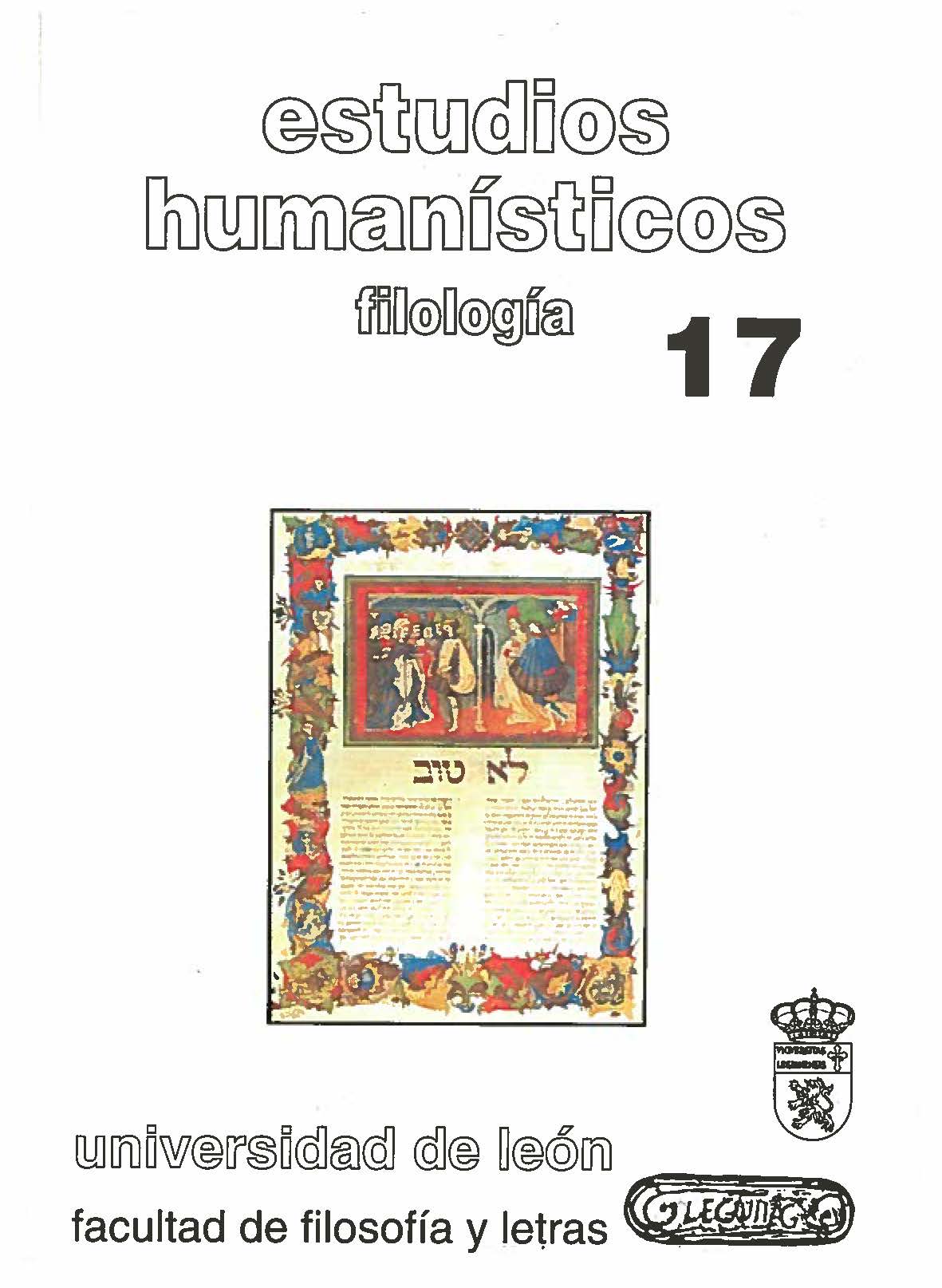Movimientos formativos de las vocales castellanas adyacentes a las fricativas [F] y [θ]
DOI:
https://doi.org/10.18002/ehf.v0i17.4104Abstract
La proximidad de las consonantes [F] y [θ] desde un punto de vista perceptivo y su semejanza espectral provocó la investigación de los sonidos ptivo adyacentes con el fin de descubrir claves acústicas que marcaran diferencias relevantes entre estas dos fricativas. La atención se centró, en concreto, en las transiciones formánticas. Se analizaron, por tanto, la dirección de los desplazamientos de los tres primeros formantes de las cinco vocales del castellano, su extensión en la escala de frecuencias y su duración, cuando aparecen en contacto con las fricativas dental y labiodental en las estructuras silábicas CV, VCV y VC. Los resultados de los experimentos pusieron de manifiesto la clara incidencia de distintas variables Corno «informante» y «posición», así como la divergencia entre las dos fricativas en lo que se refiere a las transiciones, en especial, a las del F2 de las vocales abocinadas. Este hecho se puede considerar un índice acústico de suma importancia ya que revela un punto o lugar de articulación diferente de las dos fricativas analizadas.
The fact that [f] and [^] are very close to each other perceptually and show a similar spectrum led to an investigation of the adjacent vowels in order to fincl out any acoustic cues which would reveal clear differences between these two consonantal sounds. Attention was focussed, therefore, on the vocalic transitions. The direction of the three first formant movements of the five Spanish vowels was studied, along with their size on the frequency scale and their duration, when these vowels appear in context with the labiodental and dental fricativos in the syllabic structures CV, VCV y VC. The results of the experiments showed the clear influence of certain variables, such as 'the informant' and 'the position'; they also demonstrated that distinct transitions (in particular the F2 transitions of the rounded vowels) viere caused by these two consonants. These results may be considerad as an important acoustic cue, in so far as they determine distinct places of articulation in the two fricativas analized.
Downloads
Métricas alternativas
Downloads
Pubblicato
Come citare
Fascicolo
Sezione
Licenza
Copyright (c) 1995 Silvia Carmen Barreiro Bilbao

Questo lavoro è fornito con la licenza Creative Commons Attribuzione - Non commerciale - Condividi allo stesso modo 4.0 Internazionale.
Los autores o autoras que publican en esta revista están de acuerdo con los siguientes términos:
- Los autores o autoras conservan los derechos de autoría de su trabajo y ceden de forma no exclusiva los derechos de explotación (reproducción, distribución, comunicación pública, transformación) a la Universidad de León, por lo que pueden establecer, por separado, acuerdos adicionales para la distribución no exclusiva de la versión de la obra publicada en la revista (por ejemplo, alojarlo en un repositorio institucional o publicarlo en un libro), con un reconocimiento de su publicación inicial en esta revista.
- Este trabajo se encuentra bajo la Creative Commons Attribution-NonCommercial-ShareAlike 4.0 International License. Puede consultarse desde aquí la versión informativa y el texto legal de la licencia.
- Se permite y se anima a los autores y autoras a difundir electrónicamente las versiones pre-print (versión antes de ser evaluada) y/o post-print (versión evaluada y aceptada para su publicación) de sus obras antes de su publicación, ya que favorece su circulación y difusión más temprana y con ello un posible aumento en su citación y alcance entre la comunidad académica.











